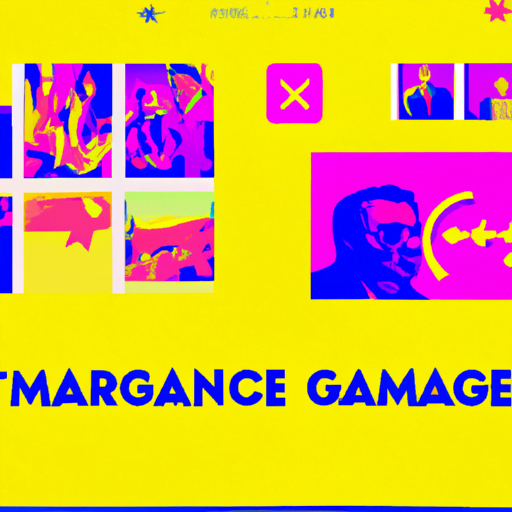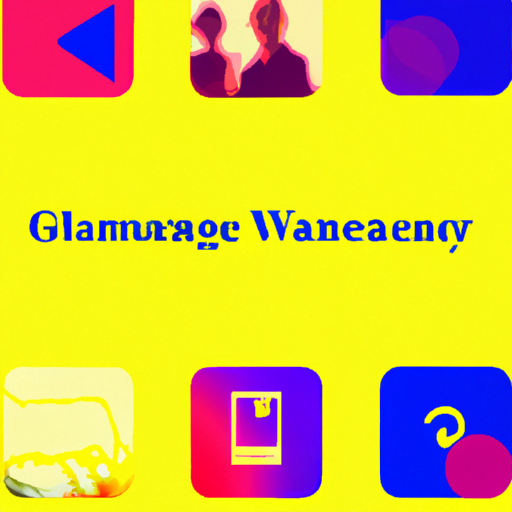
-
Table of Contents
- Interface Design for Government and Civic Engagement Apps
- The Importance of Interface Design
- Best Practices for Interface Design
- 1. User-Centric Design
- 2. Clear and Intuitive Navigation
- 3. Consistent Design Language
- 4. Accessibility Considerations
- 5. Engaging Visual Design
- 6. Feedback and Support
- Examples of Well-Designed Government and Civic Engagement Apps
- 1. MyGov
- 2. FixMyStreet
- 3. Citymapper
- Summary
Interface Design for Government and Civic Engagement Apps

Government and civic engagement apps have become increasingly popular in recent years, providing citizens with convenient ways to interact with their local, state, and national governments. These apps serve as a bridge between the government and the people, allowing citizens to access information, participate in decision-making processes, and voice their concerns. However, for these apps to be effective, they must have a well-designed interface that is user-friendly, accessible, and engaging. In this article, we will explore the importance of interface design for government and civic engagement apps and discuss best practices and examples.
The Importance of Interface Design
Interface design plays a crucial role in the success of government and civic engagement apps. A well-designed interface can enhance user experience, increase engagement, and promote transparency and trust. Here are some key reasons why interface design is important:
- User Experience: A user-friendly interface ensures that citizens can easily navigate the app, find the information they need, and complete tasks efficiently. A positive user experience encourages continued usage and engagement.
- Accessibility: Government apps should be accessible to all citizens, including those with disabilities. An inclusive interface design considers accessibility guidelines and provides features such as text-to-speech, adjustable font sizes, and color contrast options.
- Engagement: An engaging interface design can motivate citizens to actively participate in civic activities. By incorporating gamification elements, interactive features, and personalized experiences, apps can encourage users to explore and contribute to their communities.
- Transparency and Trust: A well-designed interface can help build trust between citizens and the government. Clear and intuitive design choices, such as prominently displaying relevant information and providing easy access to feedback channels, can enhance transparency and foster a sense of accountability.
Best Practices for Interface Design
When designing interfaces for government and civic engagement apps, it is important to follow best practices that prioritize usability, accessibility, and engagement. Here are some key best practices to consider:
1. User-Centric Design
Start by understanding the needs and goals of your target audience. Conduct user research, gather feedback, and involve citizens in the design process. By putting the user at the center of the design, you can create an interface that meets their expectations and addresses their pain points.
2. Clear and Intuitive Navigation
Ensure that the app’s navigation is clear and intuitive, allowing users to easily find the information or features they are looking for. Use familiar icons and labels, organize content logically, and provide search functionality to enhance discoverability.
3. Consistent Design Language
Adopt a consistent design language throughout the app to create a cohesive and familiar experience for users. Use standardized UI components, typography, and color schemes to maintain visual consistency. Consistency helps users understand how to interact with the app and reduces cognitive load.
4. Accessibility Considerations
Make sure your app is accessible to all citizens, regardless of their abilities. Follow accessibility guidelines such as the Web Content Accessibility Guidelines (WCAG) to ensure that users with disabilities can navigate and interact with the app effectively. Provide alternative text for images, captions for videos, and keyboard navigation options.
5. Engaging Visual Design
Use visual design elements to create an engaging and visually appealing interface. Incorporate relevant imagery, icons, and illustrations to enhance the user experience. However, be mindful of not overwhelming the interface with excessive visual elements that may distract or confuse users.
6. Feedback and Support
Include feedback and support mechanisms within the app to encourage user engagement and address user concerns. Provide clear instructions, tooltips, and error messages to guide users through the app. Additionally, offer channels for users to provide feedback, report issues, or seek assistance.
Examples of Well-Designed Government and Civic Engagement Apps
Let’s take a look at some examples of government and civic engagement apps that have successfully implemented interface design best practices:
1. MyGov
MyGov is an Indian government app that allows citizens to engage with the government and participate in various initiatives. The app features a clean and intuitive interface with easy navigation. It provides personalized recommendations based on user interests and allows users to contribute ideas, participate in surveys, and access government services seamlessly.
2. FixMyStreet
FixMyStreet is a UK-based app that enables citizens to report issues such as potholes, graffiti, and broken streetlights to their local authorities. The app has a user-friendly interface that allows users to easily pinpoint the location of the issue on a map, add details, and submit reports. It also provides updates on the progress of reported issues, promoting transparency and accountability.
3. Citymapper
Citymapper is a transportation app available in various cities worldwide. It provides users with real-time transit information, route planning, and navigation assistance. The app’s interface is designed to be highly intuitive, with clear icons and a simple layout. It offers a seamless user experience, helping citizens navigate their cities efficiently and make informed transportation choices.
Summary
Interface design plays a crucial role in the success of government and civic engagement apps. A well-designed interface enhances user experience, promotes accessibility, increases engagement, and fosters transparency and trust. By following best practices such as user-centric design, clear navigation, consistent design language, accessibility considerations, engaging visual design, and feedback mechanisms, government and civic engagement apps can provide citizens with effective tools to interact with their governments and actively participate in civic activities. Examples like MyGov, FixMyStreet, and Citymapper demonstrate how successful implementation of interface design can lead to impactful and user-friendly government and civic engagement apps.
